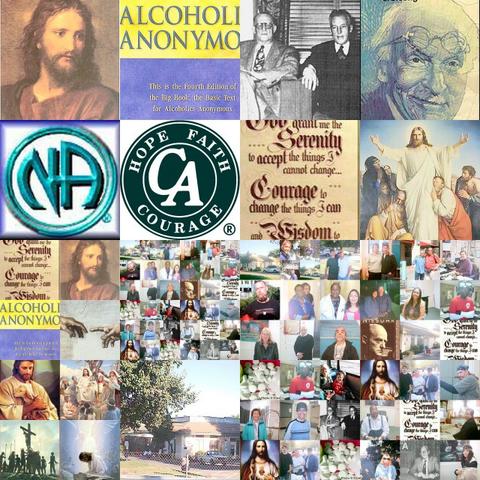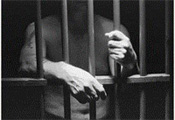Wellbriety Movement for Prisons: A Way to Bring Incarceration Numbers Down
Why is recidivism so high for Native people who've been to prison? What do people need to make prison a one-time-only experience or a not-at-all experience? White Bison's Wellbriety for Prison's Program has some of the answers.
A New Program to Deal with Incarceration
The correlation between alcohol abuse and prison time for Native Americans is almost 100%. A good start on sobriety can take place in prison because abstention from alcohol is close to 100% on the inside. But what happens when someone gets out and heads back to the community or Reservation where he or she came from?
Wellbriety for Prisons uses the Medicine Wheel and the 12 Steps program as its core learning approach, but it also adds knowledge on the criminal mind into the mix so that the needs of former inmates can be addressed.
The Medicine Wheel and 12 Steps Program is culture-friendly 12 Step work conveyed by a set of videos and a workbook as well as teaching by a facilitator. It is also taught by the new book The Red Road to Wellbriety: In the Native American Way which was introduced in September of 2002. Where conventional 12 Step work is strong on words and a mainstream cultural orientation, the Medicine Wheel and the 12 Steps Way draws on visual learning (pictures) and kinesthetic learning (movement and hands-on activities) to balance the words with emotional, cultural, and ceremonial experiences. It also uses a strong cognitive teaching style that helps people work with the very thinking process that got them in trouble to start with. These special features, not found in conventional AA, make this approach work for Native people.
The aim of the Wellbriety for Prisons Program is to provide a series of intensive four-day training sessions covering all 12 Steps so that the participants can take the program back to the prisons or communities they work in. The program is for people who work in prisons, either as staff or volunteers, workers in probation or parole departments, pre release centers, or in halfway houses and treatment centers serving Native people.
Another important part of Wellbriety for prisons is the connected follow-up trainees can draw on after the four-day session is over. Connected follow up means that those who attended the training can come to follow-up workshops or communicate with the facilitators about their special needs for up to four years after their training. If they can organize a training in their own home communities or prison institutions it may also be possible to do a customized training right onsite. Connected follow-up also means participating in the discussion board that is now taking place on the www.Whitebison.org website.
Combining Three Powerful Ways…
Wellbriety for Prisons combines the well-known 12 Step approach with cognitive self change learning, and knowledge of the criminal mind. What does all this mean?
The 12 Step approach of AA has been around in the mainstream world since the 1930's. Many Native Americans have sobered up and gone on to live sober lives after entering its doors.. The Medicine Wheel and the 12 Steps Way brings the 12 Steps into a circle and connects a great principle of living with each step.
These 12 Principles point the way to working the conventional 12 Steps in a cultural manner.
When the 12 Steps are combined with a cultural approach, each person's own tribal traditions and ceremonies can be used as he or she works the Steps. So, for example, the Steps can be taken in a traditional Sweat Lodge (Purification Ceremony) with a traditional elder or a sobriety and wellness mentor as a person's sponsor. Each time an individual or a group of people comes into a Circle to work the Steps the process can begin with a smudge of sage, cedar, sweetgrass or other local medicines.
Understanding the thought process is also a contribution of the Medicine Wheel and the 12 Steps found in the Wellbriety for Prisons Program. One way of doing this is through the use of mind maps. A mind map is a picture of what is going on with our thoughts and feelings. Getting our heart and mind out on paper in a visual way helps us not to be stuck in words and concepts. A mind map brings life to words and concepts so that we feel what we are talking about.
Another part of the cognitive self change approach contained right within the Medicine Wheel and the 12 Steps Program understands self talk. Self-talk is that conversation which we are having with ourselves right at this moment.. But do we really know what we are saying to ourselves? We can learn to pay attention to how we are talking to ourselves and to not fall prey to our own negative self-talk. We can then replace negative self-talk with positive, helpful self-talk. Negative self talk is like a predator who is stalking us and waiting for our own negative instructions to ourselves to become harmful behavior. It's just a matter of time. These voices are also called "super ego voices" because they are designed to protect our own egotism and keep it going. The cognitive self change component of the Prisons program shows how to replace harmful self talk with healing self talk.
How it works
Blaine Wood (Woody) talks about the cognitive learning experience in the Prisons program. He says, "If you have the right facilitator it's very exciting to start discovering stuff that you really didn't know about yourself. Depending on how it is delivered, I think cognitive self change can be very helpful. If its delivered with pictures and kinesthetic learning then I can change. If I help you see a problem with you two things could happen. You could develop a resentment of me, or you could get excited. The automatic thing that will happen is the motivation to want to change it. And that comes from Great Spirit."
Understanding the criminal mind is a part of the Prisons program that has great potential for helping people break the logjams that often come up in ordinary 12 Step programs. Most 12 Step work doesn't include knowledge about how our beliefs, attitudes, and mindsets make it difficult for us to take a look at ourselves.
"When you go into a prison there are mindsets, beliefs and attitudes towards treatment, treatment providers, and staff," explains Woody. "The 12 Steps are about reducing and removing resentment and de-victimizing. In the criminal mind a set pattern that is not worked on makes it harder, and sometimes even impossible to remove a resentment. You can write that 4th Step inventory all you want, but if you don't discover that you have a belief, mindset and attitude, you won't understand why you are trying to remove a resentment. And so its more difficult."
Wellbriety for Prisons provides a network of supportive programs for individuals within the prison system, in treatment centers, half-way houses, pre-release centers and in the community. These programs provide resources, emotional, mental, physical, and spiritual support for Native Americans who are looking for a traditional alternative for recovery support and relapse prevention.
Photo Credit: Building a Sweat Lodge, by Darin Barry on Flickr. Creative Commons License.
Like this post?
Education for Liberation!
Peter S. Lopez aka: Peta
Email: peter.lopez51@yahoo.com
Key Link: http://www.NetworkAztlan.com



No comments:
Post a Comment
Please give feedback with respect!